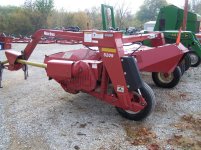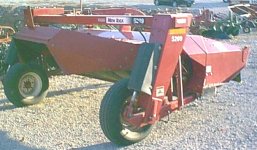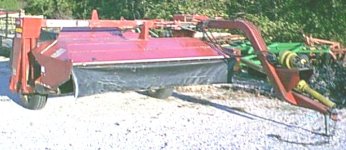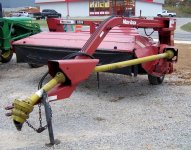Howdy,
I know it is winter and most are dealing with snow, but I had a question on the best cutters for alfalfa. I recently bought an old horse ranch in west Texas and am converting to an alfalfa farm and wondered if anyone had some advice on the best swather/moco etc... I was leaning towards a New Holland 1411 or Case DC type. Any and all advice is greatly appreciated.
The much more important issue for you is the quality of the hay stand per square foot.
The importance of tillage and ground preparation for secondary tillage preparing for seeding is paramount to maintain a high tonnage per acre.
The use of deep tillage using plowshares like the ones offered by Weiss industries which have a very good ability to suck into the bottom of the furrow and have very low ground resistance to allow good plowing speeds
and that till to 14 inches in depth to break the hard pan is extremely important to create good sod for alfalfa.
The use of mined Gypsum and lime in hydrated or pellet form are also important in soil building as well as they aid in soil tilth and its ability to host seed crops.
The use of a Rototiller or spader for ground preparation is a one step operation for tillage and offers very deep tillage to break hardpan for the end user and also aids in bringing rocks up to the surface for removal.
The PTO powered spader does not dig as deep as a rototiller using the northwest tiller as an example in use today.
The ownership of towed rock picker will also aid in seedbed preparation as it permits the creation of a firm seed bed free of rocks allowing quicker germination of the alfalfa or other seeding crop( there is another hayalge crop that is being used and marketed now and I cannor recall the name of the seed but it is much more tolerant of weather extremes than alfalfa. I willlhave to look in my older copys of AG weekly to post it here(with the adminstrators permission of course).
The use of a drop type grass seeder with packer rolls has been proven to be the fastest way to a thick stand for grasses. Brillion iron works is one manufacturer as an example.
Maintaining hay quality for the grower that is first and foremost for the custom operator/grower.
The more important issue is whether you are doing the harvesting or having it contracted out by a traveling custom harvesting operation.
The larger high horse power equipment wieghs more per square foot than a small compact utility tractor and a Wolagri mini baler.
Haylage that is made up and packaged in the smaller mini bales and wrapped
with the white plastic can be baled with a slightly higher moisture content
and stored safely with no issues of mold or high losses of T.D.N. which
affects the selling price for the grower.
The white plastic bale covering also does not absorb heat like the black bale wrapping plastic either which over heats the haylage if itis exposed to sunlight for long periods.
A mini bale of haylage with the white plastic wrap is a better way to maintain haylage quality for the end user or reseller as the haylage crop is much less likely to become moldy or suffer from moisture damage which can sicken and kill livestock if itis not removed when found.
The use of a mechanised stone burrier/tiller is another option but the soil is not left loose to allow root growth for seeded crops.




